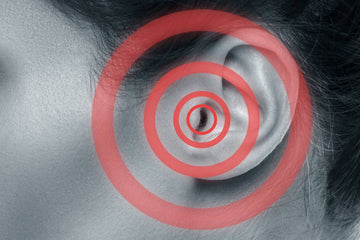Adult vs Pediatric Hearing Aid: What's the Difference?
by Hear Clear on Jul 28, 2024

When it comes to hearing aids, one size definitely doesn't fit all. The world of hearing aids is diverse, catering to different needs, lifestyles, and yes, even age groups. So if you're navigating the hearing aid landscape, whether for yourself or a loved one, understanding the differences between adult and paediatric hearing aids is key. It's not just about amplifying sound; it's about enhancing life quality in a way that's tailored to the user's specific needs and stage of life.
Basic Differences Between Adult and Paediatric Hearing Aids
Before we get into the specifics, let's start with the basics. Adult and paediatric hearing aids may seem similar at first glance, but they're designed with very different users in mind:
Size and Fit
One of the most obvious differences is size. Paediatric hearing aids are, unsurprisingly, smaller to accommodate the smaller ears of children. They're also designed to be more flexible in terms of fit, allowing for adjustments as the child grows. Adult hearing aids, on the other hand, come in a variety of sizes and styles to suit different preferences and degrees of hearing loss.
If you're curious about the different types of hearing aids available, you might want to explore our different types of hearing aids to get a better understanding of what's out there.
Design and Durability
When it comes to design, paediatric hearing aids are built to withstand the active (and sometimes rough) lifestyle of children. They're often more durable, with features like tamper-resistant battery compartments to prevent curious little fingers from accessing potentially harmful parts. Adult hearing aids, while still durable, focus more on sophisticated features and discretion.
Features of Adult Hearing Aids
Adult hearing aids are designed with the mature user in mind, offering a range of features to enhance daily life.
Advanced Technology
Many adult hearing aids come equipped with advanced technology like Bluetooth connectivity, allowing users to stream audio directly from their smartphones or other devices. Some even have smartphone apps for easy adjustments and personalization.
Style Options

Adults have a wide range of style options to choose from, including behind-the-ear (BTE), in-the-ear (ITE), and completely-in-canal (CIC) models. For those prioritising discretion, there are even good quality invisible hearing aids available that sit deep within the ear canal.
Features of Pediatric Hearing Aids
Paediatric hearing aids are specifically designed to support a child's development and learning.
Child-Friendly Features
These hearing aids often come in bright colours or with fun stickers, making them more appealing to children. They also typically have LED indicators to help parents and teachers ensure the device is working properly.
Compatibility with Assistive Devices
Paediatric hearing aids are often designed to be compatible with FM systems and other assistive devices commonly used in educational settings. This helps ensure that children can hear their teachers clearly, even in noisy classroom environments.
Customization and Adjustments
Both adult and paediatric hearing aids require customization and regular adjustments, but the process differs between the two.
Adjustments for Adults
For adults, adjustments often focus on fine-tuning the hearing aid to suit individual preferences and lifestyle needs. This might involve tweaking settings for different environments, like quiet home settings versus noisy restaurants.
Adjustments for Children
With paediatric hearing aids, adjustments are more frequent and focus on supporting the child's developing speech and language skills. As the child grows and their hearing needs change, more significant adjustments may be necessary.
Cost and Insurance Considerations
The cost of hearing aids can be a significant factor in the decision-making process, and there are differences between adult and paediatric options.
Cost of Adult Hearing Aids
Adult hearing aids can vary widely in price, depending on the technology and features included. While they can be a significant investment, many find the improvement in quality of life well worth the cost.
Cost of Pediatric Hearing Aids
Paediatric hearing aids often come with additional costs due to the need for more frequent adjustments and replacements as the child grows. However, many insurance plans offer better coverage for paediatric hearing aids, recognizing their crucial role in a child's development.
Benefits of Choosing the Right Hearing Aid
Selecting the appropriate hearing aid, whether for an adult or a child, can have profound benefits. For adults, the right hearing aid can improve social interactions, increase independence, and even support cognitive health. For children, appropriate hearing aids are crucial for language development, academic success, and social-emotional well-being.
Consultation and Professional Guidance
Given the complexities involved in choosing between adult and paediatric hearing aids, professional guidance is invaluable. An audiologist can conduct thorough hearing tests, discuss lifestyle needs, and recommend the most suitable options.
Final Thoughts
All in all, understanding the differences between adult and paediatric hearing aids is the first step in making an informed decision. Whether you're considering hearing aids for yourself or for a child in your life, remember that the goal is not just to improve hearing, but to enhance overall quality of life.
So if you're ready to explore your options, we're here to help. At Hear Clear, our team of experts can guide you through the process, ensuring you find the perfect hearing solution for your unique needs. Don't let hearing loss hold you or your loved ones back – take the first step towards better hearing today.




